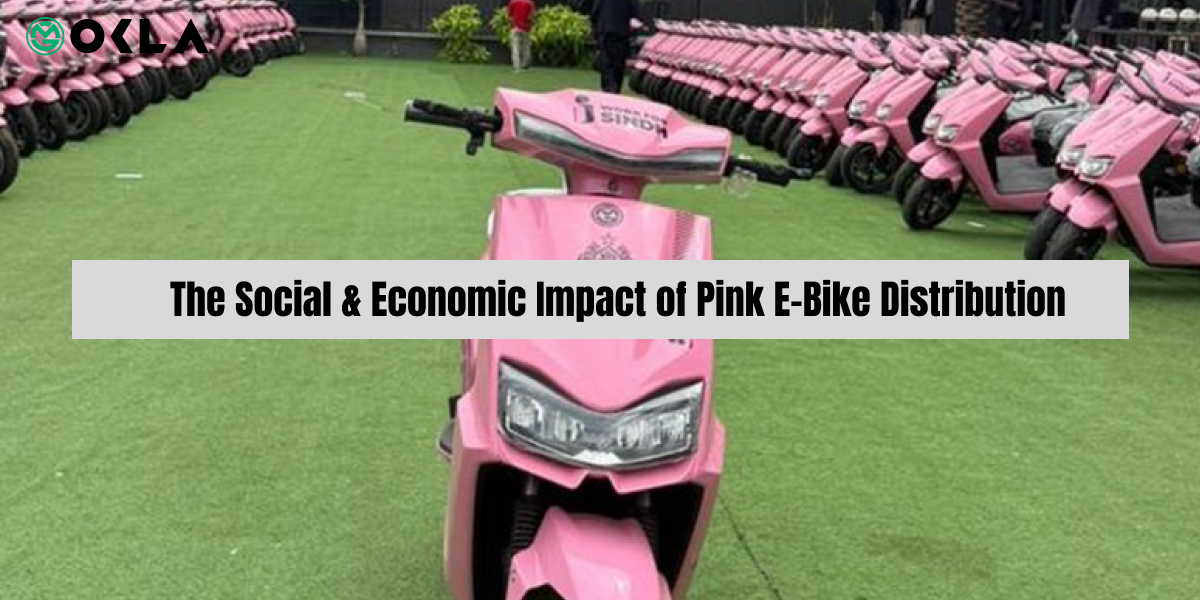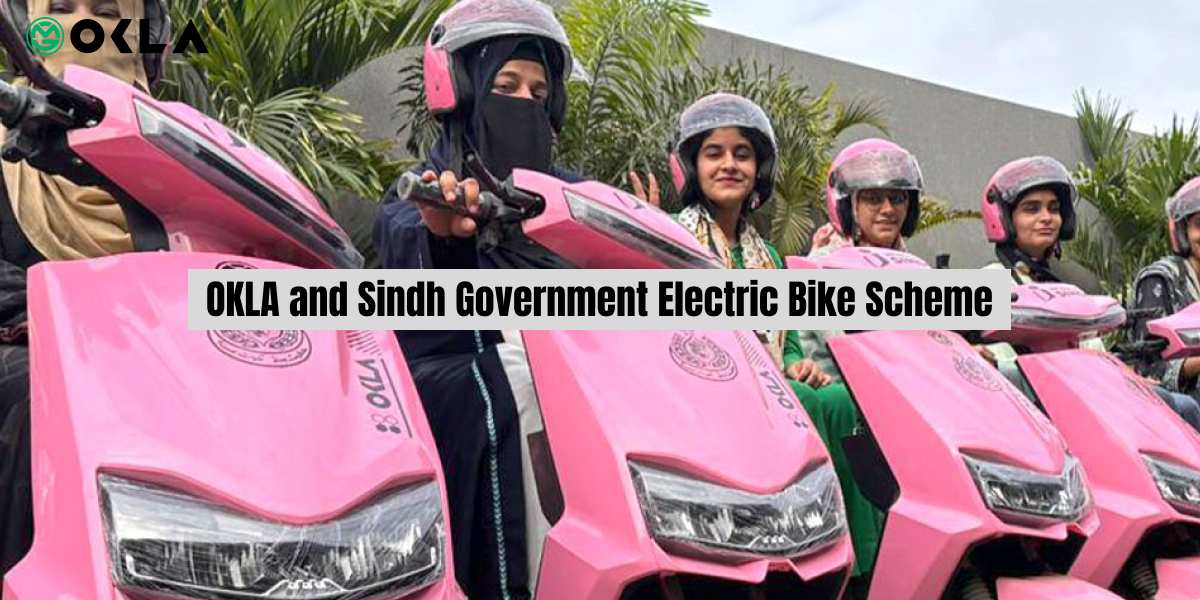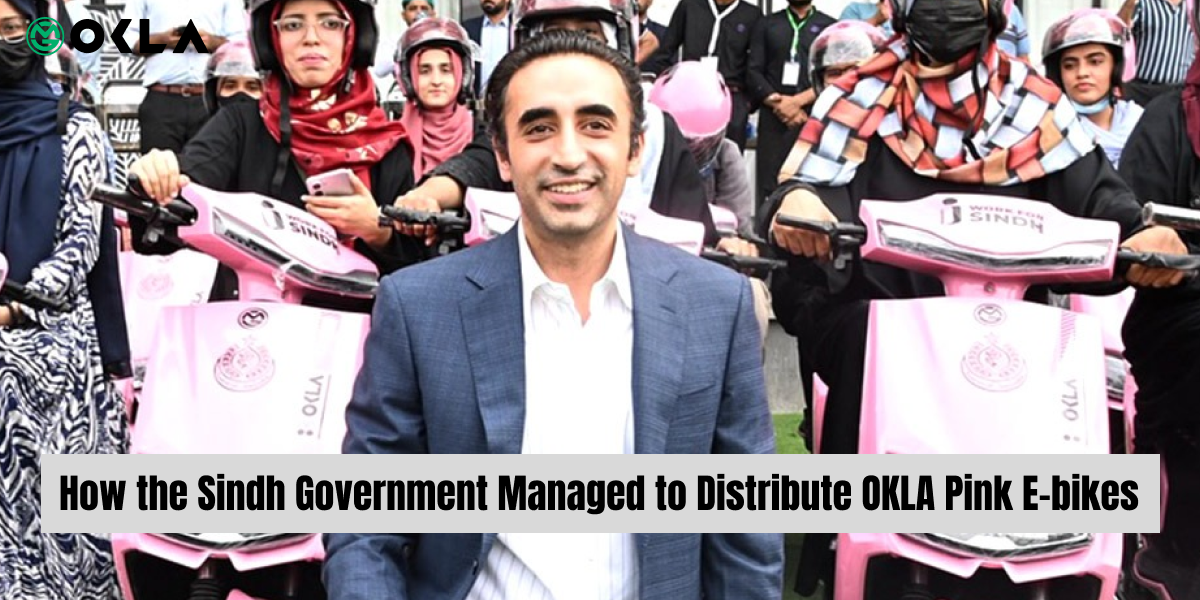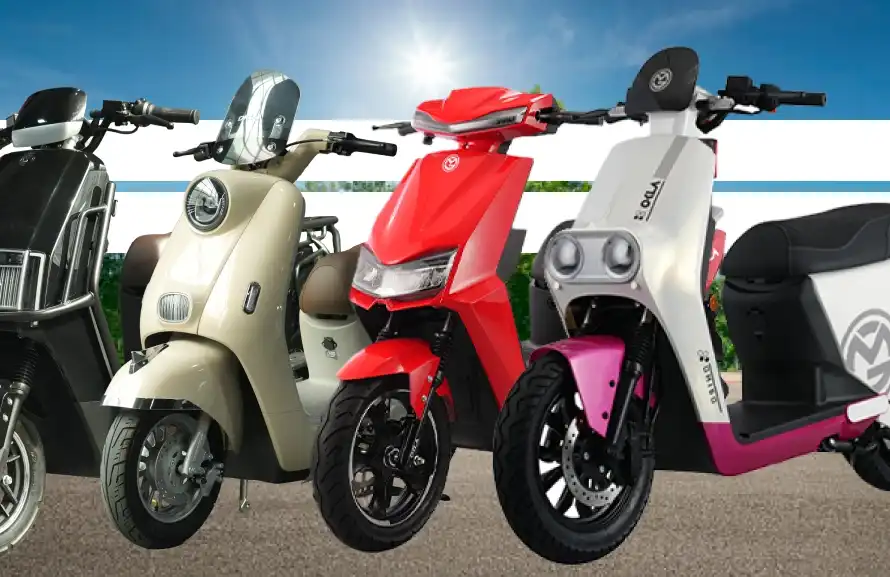The streets of Sindh are about to experience a systemic overhaul. The launch of the Sindh Pink Bike Distribution Program, a pioneering initiative to distribute thousands of electric scooters to women throughout the region, is more than a social welfare program; it is a deep economic and social change agent. By focusing on Electric Vehicles (EVs), the Sindh government is not simply empowering women; they are aligning the province with a global transition to safer, more sustainable, accessible, and independent urban transport.
OKLA is excited to announce our partnership with the Sindh government in this venture, which shows our commitment to localized EV manufacturing and environmentally friendly mobility in Pakistan. This advancement not only serves as a benchmark for electric two-wheeler adoption but also demonstrates the commercial potential of the EV sector in Pakistan.
This partnership between OKLA and the Sindh Government is also tangible evidence that when the vision of government meets the commitment of industry, you can change lives: zero-emission mobility, zero financial burden, and 100% female empowerment. The Pink EV Scooter represents a promise for a better planet and an opportunity for the women of Sindh, not simply a form of transportation.
The Social & Economic Impact of Pink E-Bike Distribution
The primary purpose of the Pink Bike Distribution program is to relieve women of their mobility challenges, which have always limited their workforce or educational opportunities. In a province where public transit is often overcrowded, unsafe, or simply does not exist along many routes, personal mobility is key.
The Social Impact of the Pink E-Bike Distribution
The availability of these electric scooters, often without charge or at a very subsidized price, achieves a number of important social objectives.
- Safety and Security: A dedicated, personally-owned mode of transport obviously reduces women’s chances of risk and vulnerability when they are commuting using shared or public transport.
- Increased Labour market Participation: If the commute is cut and the cost is low, women from low- and middle-income families are much more likely to stay in the job market, seek better employment opportunities, and improve the financial security of their families.
- Access to Education: For female students, the electric scooty means they can get to class on time and not rely on a male person in the family to drop them off every day, which affects the female enrollment and retention rates in higher education directly.
The Economic Impact of the Pink E-Bike Distribution
In terms of the economy, this means there is a benefit to GDP by engaging a larger segment of the female population in the formal industry and service sectors.
The Sindh government’s decision to go with Electric vehicles (EVs) instead of petrol bikes was not just a sustainability initiative; it is a commercial decision that tilts the decision in favor of Pareto-optimal benefit to the end user in the longer run, while also benefiting the province.
OKLA and Sindh Government Electric Bike Scheme
OKLA sees the Sindh Pink E-Bike Scheme as the future of mobility, where women’s empowerment and economic growth intersect. We promote electric bikes because of their exceptional efficiency, an important consideration for the grant recipients in this program:
Cost and Benefit Comparison
| Feature | Electric Bike | Petrol Bike (70cc) | Benefits of the Pink Bike Scheme |
| Fuel Cost | No Cost (charging at home) | High cost with market fluctuations | Commute costs drop to further the household income |
| Maintenance | Extremely Low (no engine oil, spark plugs, filters) | High (with regular oil change, tuning, clutch plates, etc.) | Manageable: easy for first-time female riders to work with and maintain. |
| Noise & Ease | Silent, smooth, no clutch/gears | Loud, manual gear change required | Ease of use: not hard to learn, stress-free urban commute |
The government is making a future-proof decision by promoting electric mobility. In addition to the economic sustainability of creating new demand, the large-scale purchase of 1,000 electric bikes provides immediate demand for basic infrastructure for charging, also demand for maintenance training in the local informal job market, and demand for an assembly facility to supply the bikes locally, once again stimulating the domestic EV industry, a solid investment focus of companies like OKLA.
How the Sindh Government Managed to Distribute OKLA Pink E-bikes
A plan of this magnitude involves meticulous planning to elevate it out of mere symbolism and have a lasting socio-economic effect. The Sindh Mass Transit Authority (SMTA) has made some impressive first steps:
1. The focus on training and licensing
The requirement that they either have or obtain a valid two-wheeler license and the concurrent provision of free training via government departments or private partnerships (like those now being advanced by OKLA) are critical to road safety. It ensures the newly empowered riders will also be safe riders.
2. Transparency and equity
The commitment to a public and transparent balloting process, as well as the lock on quotas for working women, students, and minorities, ensures that the aid is received by the most deserving and marginalized communities, hitting the last-mile equity intention of the scheme.
3. Long-term commitment
The policy not permitting the sale or subletting of the pink bikes for seven years is an essential safeguard. This ensures the assets remain with the intended target community to be beneficial for long-term empowerment, and not sold off for short-term cash benefit.
Conclusions: Moving Towards a Sustainable Future
The Sindh Pink Bike Distribution Program represents a significant political, social, and commercial milestone. It is an unequivocal statement that real empowerment does not come strictly from policy but is born through tangible, accessible tools that help to break down barriers to the behaviors of daily life.
As the leading voices in sustainable and accessible mobility, OKLA applauds the Sindh government for joining the electric revolution. The program is more than a bike; it is delivering gained economic independence while providing momentum toward a greener, more equitable, and prosperous Pakistan, where the future is, rather literally, on two electric tires. The momentum is here, and the momentum is clear: electric mobility is the way forward.
FAQs about the Sindh Pink Bike Distribution Program
1. How will the Pink Bike initiative help women in remote areas of Sindh?
The program brings mobility directly to women in areas with limited or no public transport. It allows them to travel safely for work or education without relying on others, improving their independence and access to opportunity.
2. Why did the Sindh government choose to collaborate with OKLA for this project?
OKLA’s expertise in electric mobility and local manufacturing made it an ideal partner. The company’s commitment to sustainable transport aligns with the province’s vision for cleaner and more inclusive mobility solutions.
3. What type of electric scooters are being distributed under this scheme?
The Pink Bikes are compact electric scooters designed for daily urban use. They feature smooth acceleration, minimal maintenance, and simple controls that make them ideal for first-time riders.
4. How does the Pink Bike scheme contribute to environmental sustainability?
By introducing electric vehicles instead of petrol bikes, the program reduces carbon emissions and noise pollution. It’s a practical step toward greener urban environments across Sindh.
5. Will beneficiaries receive training before using the bikes?
Yes. All selected women will go through a government-supported training and licensing process. This ensures they ride confidently, understand road safety, and can maintain their scooters properly.
6. How is transparency ensured during the selection and distribution process?
The Sindh Mass Transit Authority conducts a public balloting system with defined quotas for students, working women, and minorities, ensuring fair access and equal opportunity.
7. What long-term benefits does the Pink Bike program offer to Sindh’s economy?
It boosts female workforce participation, supports local EV assembly, and generates employment in maintenance, training, and charging infrastructure sectors, driving inclusive economic growth.
8. How does this initiative reflect Pakistan’s shift toward electric mobility?
The Pink Bike program represents a major milestone in Pakistan’s move toward cleaner transport. It highlights how public-private collaboration can make sustainable mobility both practical and empowering.




